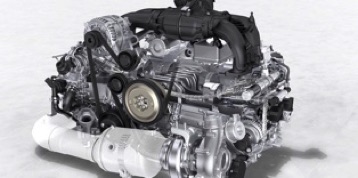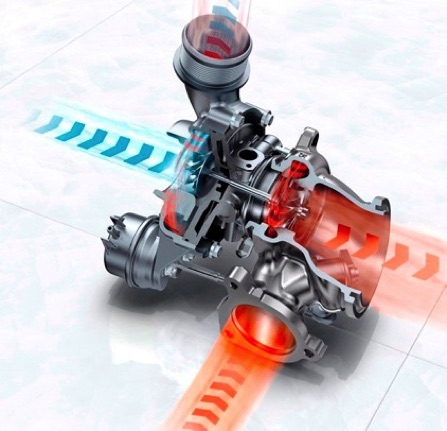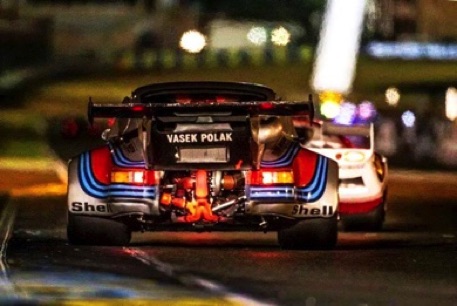
Published in the November 2017 issue of “Die Porsche Kassette”
Ⓒ2017 Technolab / PedrosGarage.com

For more information on oils, turbos and more, please visit my website:
www PedrosGarage.com.
Happy Porsche'ing,

One of my very first Tech Articles was on Engine Oil.
Back then I said it was a slippery subject because there are so many varying opinions on viscosity, brand, etc.
It’s an important subject, making sure you use the right oil and that your oil and oil filter is changed on a regular basis and much more so nowadays.
Why? Because of the newer engines now on the market.
If you have a new Boxster, Cayman or Macan the chances are that it's turbocharged.
Porsche, together with every other car manufacturer has been forced to force more air into the new engines because of the new standards and regulations which have been and are being imposed by governmental agencies worldwide. It is expected that by the year 2021 almost 40% of all new vehicles sold in the US will be turbocharged.

These new engines are much more complex than their normally-aspirated ancestors and therefore require keen attention to maintenance in order to operate as designed.
First of all we need to know what a turbocharger is, what it does and how it does it.
A turbocharger or turbo is a turbine-driven, forced air induction system that increases an internal combustion engine’s power and efficiency by forcing extra air (oxygen) into the combustion chamber.
But how does it work? The turbocharger is placed between the engine and the exhaust and takes advantage of the energy that runs out of the tailpipe and puts it to better use. The turbo has two finned wheels (turbines) that spin together on a common shaft. The “hot” wheel captures the power of the exhaust. The “cold” wheel forces more air back into the engine, then the engine management system or ECU adds extra gas to compensate and you now have the power of a larger-displacement, normally-aspirated engine.
While the turbocharger is in theory a simple mechanical device, many of the newer turbos and in particular many of Porsche’s turbos have variable turbine geometry (VTG) to reduce or eliminate boost-lag, making them marvels of modern materials and manufacturing, but costing a pretty penny. A new replacement turbo costs many thousands of dollars without counting labor to replace it.

The way to avoid premature turbo failure is to follow Porsche’s motor oil recommendations to the letter. Turbos can be brutally tough on motor oil.
While the engine crankshaft averages about 3,000 rpm at highway speeds, the turbo’s shaft can spin at almost 200,000 rpm and can reach temperatures of 1,000º C (1,800º F). Because of this, engine oil in turbocharged engines can run almost twice as hot (400ºF) as those on normally aspirated engines (200º F) so an oil that’s been tested to handle those conditions is a must and changing it and the filter at the recommended time intervals is just as important.

Glowing-red turbocharger on a Porsche racecar shows the extreme temperatures that the turbocharger is subjected to
The first thing that causes rapid wear and stress to a turbocharger is starting the car’s engine and driving off. When the engine is started there is a short delay until the oil being pumped from the oil pan reaches the turbo. In that short time span, the turbines are already spinning many times faster than the engine. Since engine oil is the turbo’s only lubricant it is very important that it be delivered quickly and efficiently to keep the bearings in the turbocharger from wearing prematurely. In this critical time it is best to allow the car to idle for a few minutes before driving off for the first time. When the oil temperature is cold it is thick and flows slower through all of the oil passages, lines and filters so it is critically important to allow the oil to come up to operating temperature before the turbo is put to use. The ideal oil temperature for oil to flow and provide proper lubrication is between 180-210º F and on a cold day it can take an engine up to 20 minutes to reach operating temperature so once you have let your car warm up for a few minutes, it’s best to drive it easy for the next 5 minutes. This will give oil the needed time to properly warm up and do its job of lubricating all of the engine’s vital areas and in particular, the turbocharger.
Every Porsche leaves the factory with Mobil1 full-synthetic oil in the engine.
According to Porsche: “This fully-synthetic oil has a solid structure with molecular chains of approximately equal length and molecules of a uniform size. This allows optimum pump and flow performance at low temperatures and extreme stability at high temperatures. Mobil 1 has another advantage over conventional engine oils: contaminants, such as paraffin, sulphur and reactive hydrocarbons are filtered out of the high-performance oils using a complex process. Added to this is increased age resistance, allowing reliable operation at extended oil change intervals”.
My Porsche has only used Mobil1 and even though it’s not turbocharged, it just turned 280,000 (s)miles on the odometer.

